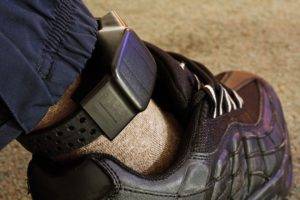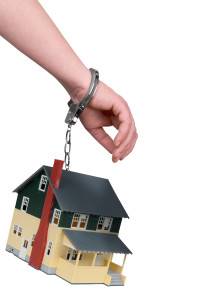Electronic Monitoring: Alternative Sentencing in California
Criminal justice officials in California and across the nation are seeking ways to relieve jail overcrowding while maintaining strict policies on controlling crime. Many counties in California have provided alternative sentencing options for some offenders in lieu of incarceration without jeopardizing public safety. One innovative program that has been embraced by judges in Superior Courts across the state is electronic monitoring home confinement, a strategy that involves two distinct correctional concepts.
What is Electronic Monitoring and Home Confinement?
Home confinement refers to any judicially or administratively imposed condition requiring you to remain inside your residence for any portion of the day and night. Home confinement may be monitored with the assistance of an electronic monitoring device and may be imposed as an alternative to jail time. The purpose of Supervised Electronic Confinement (SEC), like that of prison or jail, is to restrict your freedom to a particular location, in this case your home.
SEC involves the use of a “bracelet” typically worn on the ankle to verify that you are at designated locations at specific times. Additionally, many electronically monitored programs are used as a condition of probation or parole. Closely related to Electronic Monitoring is the use of Global Positioning System (GPS) monitoring, which utilizes satellite technology to track your movements within the community as well as other probationary terms.
Not everyone believes that Electronic Monitoring is a good idea. Critics of these programs point out that electronic monitoring is not a substitute for expanded use of supervised probation or parole. They argue that SEC and GPS Monitoring does not prevent further crime nor reduce the rate of criminal activity. Critics also believe that this alternative to jail time does not necessarily rehabilitate offenders and is not the single answer to the prison overcrowding crisis that led to the passage of the Criminal Justice Realignment Act of 2011 in California.
SEC and GPS Monitoring is, however, one tool for supervising offenders within the community and has become an established alternative to jail time for certain low-risk, nonviolent offenders, as well as for certain high-risk offenders who have served their sentence but are still subject to parole or community supervision.
Who is Eligible for Home Confinement?
If you are convicted of a crime in Orange County or any other California area, you may be eligible for house arrest as an alternative to jail time. Each county has specific rules as to whether or not a person convicted of a crime will be eligible for home confinement.
In most cases, you must meet the following conditions in order to be eligible for house arrest:
- You are a low risk, nonviolent offender
- You are not prohibited from the program by the sentencing judge
- You have been sentenced to county jail
- You have a permanent or temporary residence in or near the county in which you were sentenced
- You have a phone that you can use in the residence
- You agree to the conditions of house arrest, AND
- You pay for home confinement based on your ability to pay
Those convicted of serious crimes such as robbery or most sex offenses will likely be denied the opportunity to serve house arrest. Persons who have served time in prison in the past are not likely to be permitted to serve their sentence at home. Those that are on parole or felony probation are most often not eligible.
Home Confinement Terms and Conditions
Although house arrest can exclusively confine you to your California residence, it is typical for offenders to face less restrictive punishment. When the court imposes house arrest it means that, if you comply with all of the judge’s conditions, you will avoid serving time in jail. Home confinement is still punishment; it’s simply more desirable than traditional jail time.
These terms and conditions that you will be court-ordered to comply with may include:
- Curfew restrictions;
- Random drug testing; and/or
- In-office face-to-face meetings or home visits with your probation or parole officer.
Depending on the severity of your offense and your criminal record, the judge may allow you to do any of the following:
- Work or attend school,
- Travel to medical appointments,
- Attend and participate in counseling appointments, alcohol / drug classes, community service, etc.
- Tend to family obligations, and
- Participate in any other court-approved activities
How Does Electronic Monitoring Work?
House arrest is monitored via electronic monitoring. Electronic monitoring is administered in a number of ways depending on the county in which you live. Some typical examples include (but are not limited to):
Radio Frequency Transmission (RFT): Here, you will be fitted with an ankle transmitter and a home monitoring unit. The bracelet sends a 24-hour signal to the monitoring agency and accounts for any irregularities. “Irregularities” include tampering with the instrument, violating your curfew or traveling outside your authorized radius. This type of system can be set up as long as you have a power outlet and access to a standard phone line or cellular service.
Global Positioning System (GPS): GPS is the most advanced of the home detention devices. It uses commercial cellular networks to transmit data 24-hours a day to the monitoring agency. GPS tracking allows the supervising agency to create specific inclusion and exclusion zones, mapping, and tracking. The agency knows your exact whereabouts at all times.
What Crimes Require an Ankle Monitor?
Ankle monitors as a form of alternative sentencing are limited to low-risk offenders who did not commit a serious crime, a violent crime, or multiple crimes. Offenders must also not pose a high risk of threat to public safety or themselves. Offenders can usually qualify for ankle monitoring if they:
- Are sentenced to county jail as opposed to state prison
- Are nonviolent offenders
- Have a home in or near the county where they are sentenced
- Have a home telephone
- Agree to adhere to the rules of supervised electronic confinement
Some examples of crimes that receive ankle monitors include:
- Driving under the influence
- Minor drug or alcohol offenses
- Nonviolent sex offenses
- Unlawful immigration
Contact Wallin & Klarich Today if You Want to Participate in Home Confinement
If you or a loved has been accused of a crime in California that may qualify for home confinement, you need to contact an experienced criminal defense attorney today. At Wallin & Klarich, our attorneys have over 40 years of experience successfully getting our clients alternative sentencing options to help them avoid going to jail.
With offices in Los Angeles, Torrance, Tustin, San Diego, Riverside, San Bernardino, West Covina and Victorville, the knowledgeable criminal defense attorneys at Wallin & Klarich have been able to help our clients to successfully avoid jail time and preserve their jobs and dignity while serving a court-ordered sentence. We will work with the District Attorney’s office and the court to help you to achieve the possible result in your case.
Call us today at (877) 4-NO-JAIL or (877-466-5245) for a free telephone consultation.
We will get through this together.



